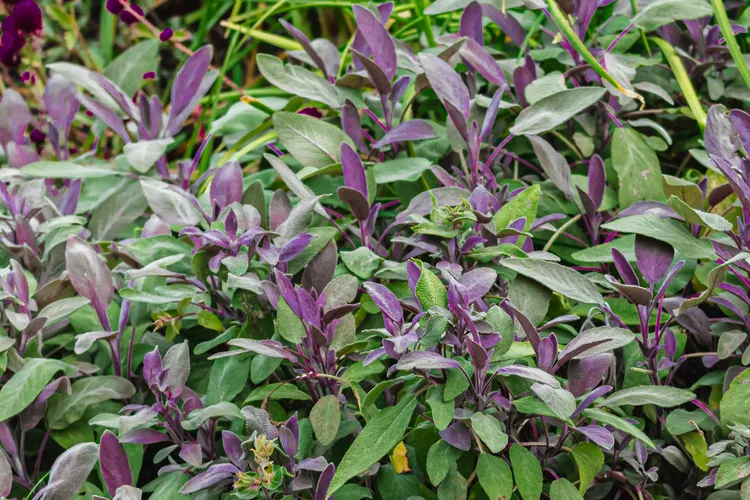
Description
Evergreen and aromatic, purple sage grows to a height of 50 cm to 1 meters with a comparable spread. Usually, the purple coloration is observed on the stems and leaves of fresh growth. Older foliage has a gray-green hue, with oblong leaves that range in length from 3 to 6 cm. The leaves have a puckered surface and are 1-3 inches long and gray-green in color. The big spikes are adorned with whorls of exquisite, 0.2–0.6 inch long purple blooms. Numerous birds and insects are drawn to the fragrant flowers.
Habitat
Native to southern California and Baja California’s coastal mountain ranges, the plant is usually found on arid hillsides with gravelly soils.
Uses
The most effective type of sage for medical purposes is purple sage, which can be used to make teas, relieve congestion and chest colds, and act as an anti-inflammatory for insect stings. Purple sage inhibits milk production, therefore women who are pregnant or breastfeeding shouldn’t use it.

Varieties
Purple sage comes in a variety of growth habits, such as the following:
Large-leaved Salvia dorrii var. Carnosa shrubs are frequently found in the Pacific Northwest of the United States.
Native to California, Salvia dorrii var. pilosa is a shrub with tiny leaves.
Clokey’s Mountain Sage, or Salvia dorrii var. clokeyi, is a low-spreading cultivar with rich purple-blue blooms.
Plant Care
- Light
Purple sage is sun-loving. The location you choose should provide them with lots of direct sunshine. Slopes that face south are ideal. The only exception is if you reside in an area that frequently suffers really severe desert weather. In these cases, they could be grateful for some midday shade. Your purple sage will not bloom as spectacularly and may be more susceptible to scale infestations or issues with mealybugs or aphids.
- Soil
Purple sage grows well in places with poor fertility. Rich, acidic, or irrigated environments are not to their liking. In fact, if your garden’s soil is a little bit richer, they frequently thrive better growing from a pile of sand or gravel. It might be best to put your purple sage in containers if you don’t have fast-drying, well-draining soil so they can obtain the drainage they require.
- Water
Even in the summer, purple sage requires little to no watering after it is established. Due to their extreme drought tolerance, these plants are an excellent option for desert gardens, as not many other blooming plant species can withstand the harsh conditions.
Your purple sage may not last as long if you overwater it. In addition to being less healthy, the plant may experience root rot.
- Temperature and Humidity
Vibrant purple sage grows best in extreme heat and dryness. Gardens with high humidity levels or moderate summer temperatures are not suitable for it.
- Fertilizer
This plant doesn’t require a lot of nutrients because it thrives in arid, barren environments. Fertilizers can limit the life of your purple sage, so it’s best to avoid them.
Table





